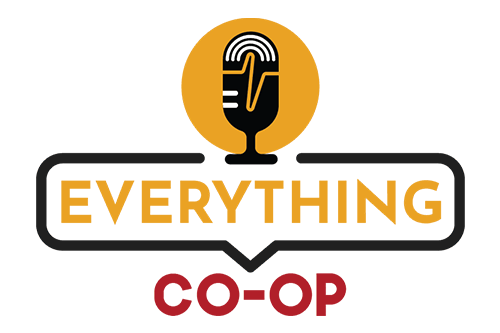If the cooperative movement in the United States effectively rallied its membership of 100 million voters—one third of the country’s population—it could wield the combined influence of the AARP and the NRA.
Now imagine that voting block unified around a single issue, or “force for good,” said Judy Ziewacz, president and CEO of NCBA CLUSA. “As NCBA CLUSA pivots from its first 100 years to the next 100, we have to ask ourselves, ‘How do we mobilize those voices and really impact the lives of individuals, families and communities?’”
Ziewacz was moderating an October 26 panel discussion at the National Press Club to close out Co-op Month that addressed what co-op leaders wish their candidates and elected officials knew about the cooperative movement, and what legislation and policies they would like to see the incoming administration prioritize.
The cooperative movement is uniquely poised to shape national dialogue if it can find a way to leverage its numbers, expertise and consumer attitudes, said panelist Alan Knapp, Vice President of Advocacy for NCBA CLUSA. According to a 2015 public opinion survey on co-ops, 70 percent of those surveyed said they trust co-ops and believe they have the best interests of their families and communities in mind.
“After all the talk and political campaigning of this election season, eventually we’re going to have to govern. Americans are going to need their problems solved,” Knapp said. “Elected officials are going to have to face the challenges of income inequality, poverty alleviation and economic opportunity. The opportunity for us is, How do we interject cooperatives into those conversations?”
One way is to build relationships with candidates before they become elected officials, said Gabe Snow, Senior Grassroots Advocacy Representative for the National Rural Electric Cooperative Association (NRECA).
“Having an informed candidate who knows what co-ops are and who understands the value that co-ops bring to communities is critical,” Snow said. “We need to engage with candidates and inform them about what cooperatives bring to the communities they will serve as elected officials.”
The crux of the message is just as important as the timing, though, said panelist Carol Zippert, a founder of the Federation of Southern Cooperatives/Land Assistance Fund.
“What I want elected officials to know is that cooperatives are people building community,” she said. “When you come together as a cooperative, it doesn’t stop there; it spills out into the rest of your life and builds a sense of commitment and togetherness that can be very powerful. Elected officials need to know the long-term impact cooperation can have on community development and sustainability.”
Panelist Vernon Oakes, host of Everything Co-op, agreed. “Co-ops are formed to solve community problems. Co-ops give people the tools they need to create their own destiny. As Dame Pauline Green has said, ‘co-ops bring people out of poverty with dignity.’ This is the message our elected officials need to hear.”
Still, panelists agreed, a more pointed message could be more effective. The cooperative movement should identify the gaps in society where cooperatives could really make a difference and help bridge those gaps by advocating for specific legislation, Snow said.
One idea, or “force for good,” could be making sure everyone in rural America has access to broadband, an effort many cooperators believe could be as transformative as rural electrification, Snow said.
Another option could be to throw the weight of the cooperative movement behind the 10-20-30 poverty plan, which calls on Congress to direct 10 percent of federal discretionary funding to communities that have had a poverty rate of 20 percent for the past 30 years, Knapp said. The plan enjoys broad bipartisan support, ranging from the Congressional Black Caucus to Speaker Paul Ryan (R-WI).
It’s important that the issue appeal to both aisles, Knapp said. Above all, though, this force for good should be determined from the grassroots up and reflect the true needs of American communities. As Zippert put it, “Ask people what they want. Don’t tell them.” The Federation, which turns 50 in 2017, has often turned down money that came with strings attached, she said.
The grassroots approach applies to wealth distribution, too, Oakes said. “This trickle-down thing has not worked. How about gush-up? How do we get money to the people at the bottom? I see co-ops as the way to start building wealth at the community level.”
The challenge, he said, is convincing Americans that cooperatives are the solution to many of their challenges. “Co-ops are hard work. It’s hard work getting people to change their attitude from a tenant to a homeowner, from an employee to an owner, but once they get that change of attitude, then everyday people can start building both financial wealth and social wealth.”
It’s also important for cities to invest in cooperative development, following the lead of New York City and Madison. In 2015, New York City invested a historic $1.2 million in worker cooperatives. That same year, Madison’s city government voted to funnel $5 million to co-op development over five years, the largest allocation by a U.S. municipality.
Another option panelists discussed is for the cooperative movement to start completing co-op scorecards for candidates and elected officials. “We would have to think carefully about the criteria, but the outcome could be very powerful in terms of getting the attention of lawmakers and making sure they’re held accountable,” Snow said.
Oakes agreed, adding that Everything Co-op dedicated an episode earlier this campaign season to rating U.S. presidential nominees Hillary Clinton and Donald Trump on their sensitivity to co-op issues. Out of 4.0, Hillary’s “Co-op GPA” was 3.5, Trump’s was 0.64, Oakes said.
“Ultimately, I want folks who are running for elected office to need the co-op vote to win,” Oakes added. A scorecard could help make the cooperative movement a bigger and more vocal part of the conversation, he said.


